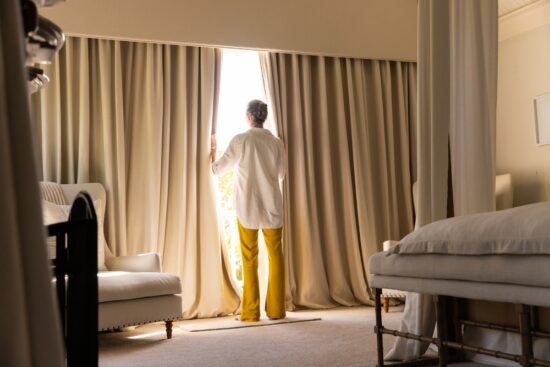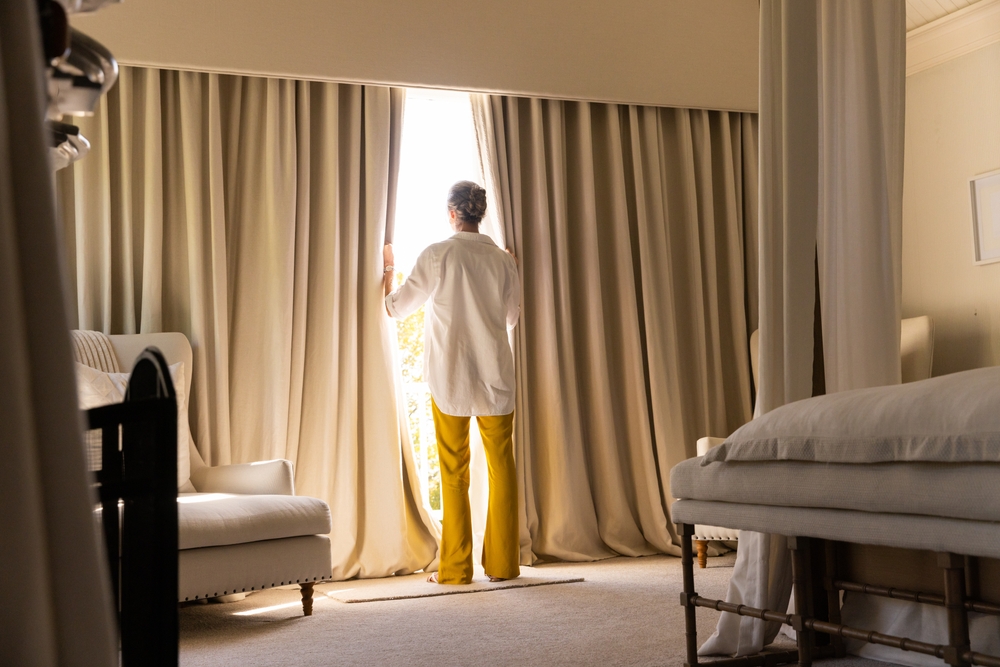
Soundproof curtains are gaining attention as an effective way to control noise in recording studios. These curtains do not completely block noise but significantly reduce unwanted sound. They help create a quieter environment, which is ideal for recording. Using multiple layers of dense fabric dampens sound waves, making them a popular choice for improving acoustic quality.
As noise control becomes increasingly important in environments like recording studios, soundproof curtains are seen as a practical solution. While they may not block all sound entirely, their ability to reduce unwanted noise makes them invaluable for achieving a focused recording space. For example, compared to regular curtains, the best acoustic curtains for studio settings feature multiple layers of dense fabric, which absorb sound waves more effectively. These kinds of options enhanced sound-dampening capability help to minimize disturbances, allowing for clearer sound capture and improving overall acoustic quality, something that standard curtains cannot achieve.
Understanding Soundproof Curtains
Soundproof curtains are designed to reduce noise in various environments. They work by absorbing and blocking sound waves, which makes them popular in studios and busy urban homes.
How Soundproof Curtains Work
Soundproof curtains function by serving as a barrier against sound. They absorb sound waves, which decreases the amount of noise that enters or leaves a room. This is achieved using thick, dense fabric layers that help dampen noise. These curtains are effective for higher frequency sounds above 200Hz. It is important to note that while they reduce noise significantly, they may not eliminate it, especially at lower frequencies.
Materials and Fabric Types
The effectiveness of soundproof curtains largely depends on the materials used. Common materials include dense fabrics like velvet and polyester. Some curtains may have multiple layers featuring a core made of mass-loaded vinyl or other dense substances. These materials are chosen for their ability to absorb sound. A blend of fabrics can improve their noise-reducing capabilities. Some high-quality options even incorporate sound-absorbing foam to improve further their effectiveness in controlling noise levels.
Evaluating Soundproof Curtain Effectiveness
Soundproof curtains are used to reduce noise in a variety of environments, including studios. Understanding how they work involves looking at how they interact with sound waves, their performance in tests, and their impact in everyday settings. Each aspect is important in determining how well these curtains can minimize sound.
Sound Absorption vs. Sound Blocking
Soundproof curtains use two main methods to manage noise: sound absorption and sound blocking. Sound absorption occurs when curtains soak up sound waves, turning them into tiny amounts of heat. This helps decrease noise inside a room.
Sound blocking, conversely, involves creating a barrier that stops sound from entering or leaving a space. This is often achieved using heavy, dense fabrics and sometimes extra layers like foam. While these curtains can’t completely stop sound, they significantly reduce noise levels, providing a quieter environment for activities like studio recording.
Laboratory Tests and Ratings
In laboratory settings, soundproof curtains are tested to determine how effectively they manage noise. Tests measure parameters like Noise Reduction Coefficient (NRC) and Sound Transmission Class (STC). The NRC quantifies how much sound energy the curtains absorb, while the STC measures their ability to block sound.
High NRC ratings suggest better sound absorption, making them useful for adding warmth to the sound within a studio. In contrast, a higher STC rating indicates more effective sound blocking, which is important for keeping external noise out. Understanding these ratings can help choose curtains based on specific noise reduction needs.
Real-World Performance
In real-world scenarios, the performance of soundproof curtains may differ from laboratory results. Curtain thickness, window size, and installation methods affect how well they work. For instance, properly covering windows with thick, high-quality curtains can significantly decrease noise from outside sources like traffic or street chatter.
In a studio setting, they help manage ambient noise, creating a more controlled environment for recording. Although they can’t eliminate all sound, they make a noticeable difference, especially when combined with other soundproofing methods like acoustic panels. Adjusting expectations and properly installing the curtains improve their effectiveness in daily use.
Conclusion
Soundproof curtains can be an effective way to reduce noise in studios. While they might not completely block all sound, they help minimize disturbances. Using thick materials and focusing on proper installation can greatly improve their effectiveness.
When selecting curtains, look for those designed to absorb sound, as they provide better results. Layering curtains can also improve their noise-reducing properties. These simple strategies can lead to a noticeable difference in studio environments.

